Container Plants Create Beauty in Your Backyard
American gardeners love containers, from traditional urns and baskets to more unconventional and sometimes surprising planters. My front porch features arrangements sprouting from an old pair of cowboy boots. I change the plants each season to suit my mood, but the boots still seem to fit.
Container gardening is a great way to create beauty and enhance an area’s appeal. It also lets you unleash your creativity. The possibilities are endless because containers can be used in any landscape. You can use one simple container on a porch to brighten an entrance, or you can combine a number of elaborate containers across a lawn or woodland area to create interest and drama in your outdoor space.
Form and Function
As with building architecture, a landscape design has both form and function. For example, in a formal garden, the geometric design demands the use of containers as focal points for the visitor’s eye.
The design dictates where decorative elements should be placed. Common arrangements include placing matching containers at points of the compass around the periphery of the area. Single containers make impressive centerpieces for the round, square or rectangular beds that compose a formal garden, and can also be used at the intersection of paths.
In an informal garden, the plants are more important than the pots containing them.
These gardens need lively plant combinations in a variety of container shapes and sizes.
The placement of containers helps define a space and direct how people will move through the landscape. They even serve as cheerful beacons for visitors when placed at entrances.
Use container gardens along pathways to transition between different areas of the landscape or to screen a view, creating curiosity for what lies beyond.
Throughout your landscape, the design elements of rhythm and balance establish the mood of the garden. Repeat plants, colors and textures within a container and between container groupings to give your space a sense of continuity and visual appeal. Arrange container gardens so they are visually balanced. Corners and transition areas are ideal locations for containers or groupings of containers.
Creating Your Garden
Any container will work as long as it drains. Use your sense of humor and imagination, but keep in mind your personal devotion to duty. Container gardening is not maintenance-free. The amount of maintenance required depends on your choice of plants, containers and location.
Almost any plant can be grown in a container. While wonderful container gardens can include just one plant – featured for its foliage or fragrance – part of the fun of container gardening is combining plant materials.
To create a great garden with multiple species, select plants that have similar light, water and growth requirements. The plants also should be compatible with your chosen site. I combine plants with strong flower power with plants that feature unique foliage. Also, mix anchor plants with those that are fleeting – annuals combined with perennials. Consider using fragrant plants where people will gather.
Your plant combinations should blend in scale and balance. Good design generally includes one plant of each form: vertical and erect, spherical and round, low and creeping. However, don’t choose plants with heights greater than 1.5 times the height of the container. Your garden will look out of proportion.
Good plant combinations also feature contrasting textures. Foliage texture can be coarse, medium or fine.
Add Dramatic Flair
Your container garden should have a focal point. A tall center plant will work, but a birdhouse or any objet d’art will attract attention and add interest. Dramatic displays include a combination of three to five varied container types and sizes clustered together.
Plant the container in tiers. Determine its center. From that point, tier downward and outward to the container’s edge. Use this technique for groupings, too.
Well-designed containers feature plants that provide color and interest throughout the year. Remember that harmonious colors of the same hues and shades are soothing. Contrasting colors are exciting, but use no more than three colors in a design.
“Color echo” is the technique of using one color as a common thread to tie together a design. This creates rhythm and harmony between container groupings, too.
Subtle colors like white and pale blue show well in diffused and subdued light. They are especially pretty in confined spaces like patios. They also look pleasing against many building materials. Pale colors and white give a sense of space in areas overshadowed by buildings or trees and shrubs.
Bold, bright plants act just the opposite. They transform a dull setting into a cheerful and eye-catching space. Bright plants make large spaces seem smaller.
A variety of soil mixtures are available for container gardens. I recommend the following potting mixes: two parts peat to one part perlite to one part sand; or two parts peat to one part sand; or one part peat to one part sand and one part pinebark. Consider adding a water-absorbing polymer, top-dressed mulch and slow-release fertilizer.
Keep it Beautiful
Container gardens are fun to construct but can be pesky to maintain. The chief difficulty is moisture. The more established the garden, the more frequently it will need watering.
It may also need dead blooms pruned and out-of-control foliage cut. These chores will rejuvenate older plants and keep the balance between the plants in control.
As with most things in life, you get out of container gardening what you put into it. I’ll see you in the garden with my watering wand held high.




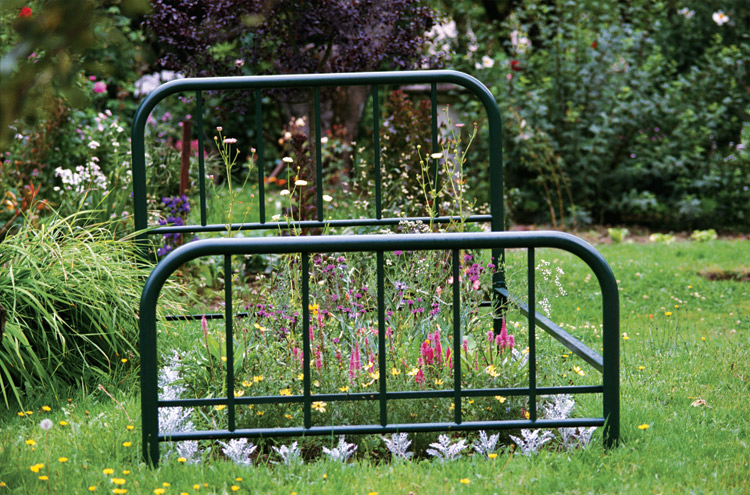
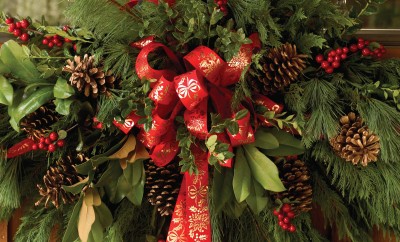
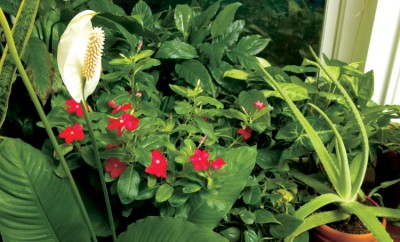
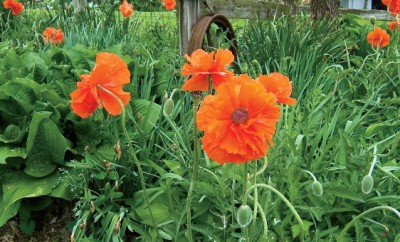

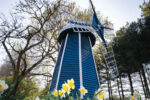




 My Indiana Home is produced for Indiana Farm Bureau members. Our mission is to connect you with the food you eat, the Indiana farmers who grow it and a rural lifestyle that is uniquely Hoosier.
My Indiana Home is produced for Indiana Farm Bureau members. Our mission is to connect you with the food you eat, the Indiana farmers who grow it and a rural lifestyle that is uniquely Hoosier.
Leave a Comment